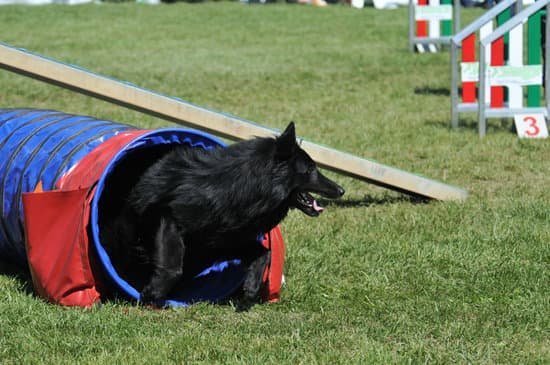There are a few basic things you need to do before you can start training your dog to walk off leash. First, make sure your dog is obedience trained and can walk nicely on a leash. If he’s not yet obedience trained, start with that before moving on to off leash walking.
Next, you’ll need to find a safe place to train your dog. A fenced-in yard is ideal, but if you don’t have one, find a large, open area where you can be sure your dog won’t run off or get into trouble.
Now it’s time to start training! The basic idea is to get your dog used to walking by your side without a leash. Start by putting him on a long leash (at least 20 feet long) and have him walk with you. If he starts to pull ahead or lag behind, correct him with a firm “no” and have him walk by your side.
When he’s walking nicely by your side, start rewarding him with treats and praise. As he gets better at walking with you, gradually lengthen the leash until he’s walking without it. Be patient and keep rewarding him with treats and praise every time he does well.
It will likely take your dog some time to get used to walking off leash, so don’t expect to be able to do it perfectly overnight. But with patience and consistent training, your dog will eventually learn to walk by your side without a leash.
Train Your Dog To Be Off Leash
No matter how much you may love your dog, there may come a time when you need him to be off leash. Whether you’re in a public park or just out for a walk around the neighborhood, an unleashed dog can be a danger to both himself and to others. Teaching your dog to be off leash is an important part of his training, and with a little patience and practice, it can be a relatively easy task.
The first step in teaching your dog to be off leash is to condition him to respond to your commands when he’s not wearing a leash. Start by putting him on a long lead and walking him around your yard. Once he’s responding well to your commands, begin to gradually reduce the length of the lead until he’s responding to your commands even when he’s not wearing a leash.
Once your dog is responding well to your commands when he’s not wearing a leash, it’s time to start working on getting him to obey your commands when he’s off leash. One of the best ways to do this is to use a training collar. A training collar is a collar that tightens around your dog’s neck if he pulls on the leash. This will help to train your dog to keep his attention focused on you and to obey your commands.
Start by putting your dog on a long lead and walking him around your yard. Once he’s responding well to your commands, begin to walk him further and further away from you. When he’s responding well to your commands, start to walk him in more open areas where he has more room to roam. As your dog becomes more comfortable obeying your commands when he’s off leash, you can begin to let him wander further and further away from you.
It’s important to keep in mind that it will take time and patience to train your dog to be off leash. Don’t get discouraged if he doesn’t obey your commands perfectly every time. Just keep practicing and be patient, and eventually your dog will learn to obey your commands when he’s not wearing a leash.
Best Length Leash For Dog Training
When it comes to choosing the best length leash for dog training, there are a few things you need to take into consideration. The first is the size of your dog. A large dog will need a longer leash than a small dog. The second thing to consider is what you will be using the leash for. If you will be using it for basic obedience training, a six-foot leash is a good length. If you will be using it for advanced obedience training or for tracking, you will need a longer leash, perhaps ten or twelve feet long.
The type of leash is also important. There are several different types of leashes, each with its own advantages and disadvantages. The most common type of leash is the standard nylon leash. It is strong and durable, but it can be a little stiff. A better choice for obedience training is a soft nylon leash. It is less likely to cause irritation to your dog’s skin, and it is more flexible than a standard nylon leash.
Another type of leash is the training lead. It is made of soft cotton or nylon and is very flexible. It is ideal for close-up work, such as training your dog to heel. The disadvantage of a training lead is that it is not as strong as a standard nylon leash.
If you will be doing a lot of tracking with your dog, you may want to consider a tracking lead. It is made of strong, durable materials and is designed to withstand the rigors of tracking. It is also adjustable, so you can customize it to fit your dog’s size.
The best length leash for dog training depends on the size of your dog and what you will be using it for. A standard nylon leash is a good choice for basic obedience training, while a tracking lead is ideal for tracking. The type of leash you choose is also important. A soft nylon leash is ideal for obedience training, while a training lead is perfect for close-up work.
How To Train Dog To Be Off Leash
There are a few things you can do to train your dog to be off leash. First, you need to make sure your dog is comfortable and confident off leash. Start by taking your dog to a fenced-in area, like a park, and let them explore. Once they’re comfortable, begin to work on basic commands like sit and stay. Once your dog is responding well to commands, you can start to let them off leash in more open areas. If your dog starts to wander off, use a command like “come” to get them to return to you. Be patient and keep practicing, and soon your dog will be able to wander off leash without any problems.
Leash Training A Dog
Leash training is one of the most important aspects of training a dog. It is necessary to teach your dog to walk on a leash properly so that you can have control over him and keep him safe. There are a few things you can do to make the process easier for both you and your dog.
Start by getting a leash that is the appropriate size for your dog. A leash that is too long or too short can make leash training more difficult. You also want to make sure the leash is made of a sturdy material, such as nylon or leather, that will not break if your dog pulls on it.
Once you have the right leash, begin by teaching your dog how to sit and stay. Once he has mastered these commands, put the leash on him and practice walking him around the house. When he starts to pull on the leash, stop and make him sit and stay. Once he is calm, continue walking.
If your dog continues to pull on the leash, start by putting him in a sit or a down stay and gradually increase the amount of time he is required to stay in that position. Once he has mastered this, you can start to walk him around the house again. If he starts to pull, stop and make him stay in place until he is calm.
If you are consistent with your leash training, your dog will soon learn how to walk properly on a leash.

Welcome to the blog! I am a professional dog trainer and have been working with dogs for many years. In this blog, I will be discussing various topics related to dog training, including tips, tricks, and advice. I hope you find this information helpful and informative. Thanks for reading!





